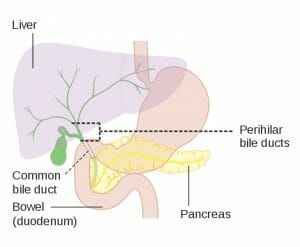The oxygen that enters the lungs, the sun that makes Vitamin D in the skin, and the digestive system are three ways the body obtains the molecules it needs. The human digestive system is constantly working in the background to maintain homeostasis and health. In addition to the tube-like digestive pathway from the mouth to the anus, organs such as the liver, gallbladder, and pancreas are other parts of the digestive system with critical functions that help the body stay in equilibrium.
Providing Nutrients
The body needs proteins, carbohydrates, fats, vitamins, and minerals for all systems to work properly. The digestive system provides these beginning at the mouth where food and liquids enter the system. After being chewed and mixed with saliva and enzymes, the food passes through the esophagus and enters the stomach where it is churned and mixed with gastric juices. The stomach produces several hormones that regulate food ingestion and digestion. Some fat soluble substances like aspirin enter the bloodstream in the stomach while the chyme passes into the small intestine. Here, food is propelled along slowly while being digested further by bacteria. The small intestine absorbs nutrients from the breakdown of proteins, fats, proteins, and carbohydrates as well as water, minerals, and vitamins. The highly vascularized tissues transport these nutrients throughout the body. Some further breakdown and absorption occurs in the large intestine as well as absorption of any remaining vitamins, electrolytes, and water. The waste that is leftover is moved toward the rectum and eliminated as feces.
The bacterial flora in the intestines are essential to homeostasis in the body. They not only break down food so the nutrients can be absorbed, they produce vitamins like biotin and vitamin K and guard against harmful bacteria that enter the system.
Immune Homeostasis
An often overlooked function of gut bacteria is immune homeostasis. Bacteria in the gut influence local immunity in the intestines and can also profoundly influence systemic immunity in the body. Lymph nodules in the gut wall called Peyer’s patches secrete interleukin 10 which is an anti-inflammatory and has been shown to stop the spread of tumors in mice. Also, the intestines are home to a type of immune cell called CD4+ T cells that are part of the adaptive immune system. These T cells differentiate into four other types of T cells including helper T cells. Thus, they help regulate the balance of T cell subtypes in the body which is crucial to good health.
The Digestive Organs
The liver manufactures bile salts that enter the intestines to emulsify fats and make it easier for them to be digested and absorbed. The storage and concentration of bile happens in the gallbladder and it enters the intestines via the bile ducts. Digestive enzymes and bicarbonate are produced in the pancreas. The bicarbonate helps to neutralize acids in the chyme traveling from the stomach into the small intestine. The raising of the pH also provides the ideal environment for the digestive enzymes to do their work.

The image above shows how bile from the gall bladder enters the first part of the small intestine (the duodenum).
References
- OpenStax College. (2018). Anatomy & Physiology. Houston, TX. OpenStax CNX. Retrieved from http://cnx.org/contents/14fb4ad7-39a1-4eee-ab6e-3ef2482e3e22@8.119
- Human Digestive System. (n.d.). In Wikipedia. Retrieved April 9, 2018 from https://en.wikipedia.org/wiki/Human_digestive_system
How Does the Digestive System Maintain Homeostasis
No comments:
Post a Comment